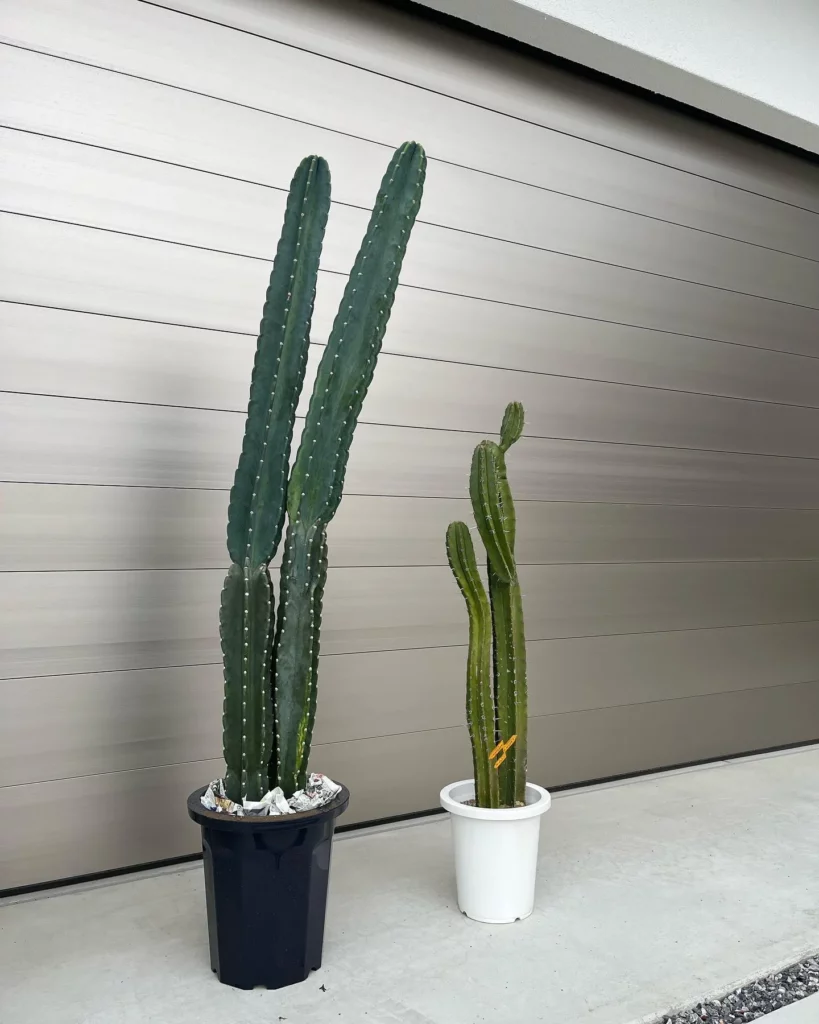Discover the secrets to keeping your Senita Cactus happy and thriving with this comprehensive care guide. As a unique succulent, the Senita Cactus requires specific care to flourish in your home or garden. Follow my tips and advice on its appearance, light requirements, watering, fertilizing, potting, propagation, growth and development, as well as how to handle common pests and diseases.
Key Takeaways:
- Senita Cactus is a unique succulent that requires specific care to thrive.
- Provide ample sunlight for your Senita Cactus by placing it in a location with direct sunlight or bright, indirect sunlight indoors.
- Water your Senita Cactus sparingly, allowing the soil to dry out completely between waterings to prevent root rot.
- Use a balanced fertilizer specifically formulated for cacti and succulents to promote healthy growth and flowering.
- Pot your Senita Cactus in a well-draining potting mix and repot every two to three years or when it outgrows its current container.
Appearance of Senita Cactus
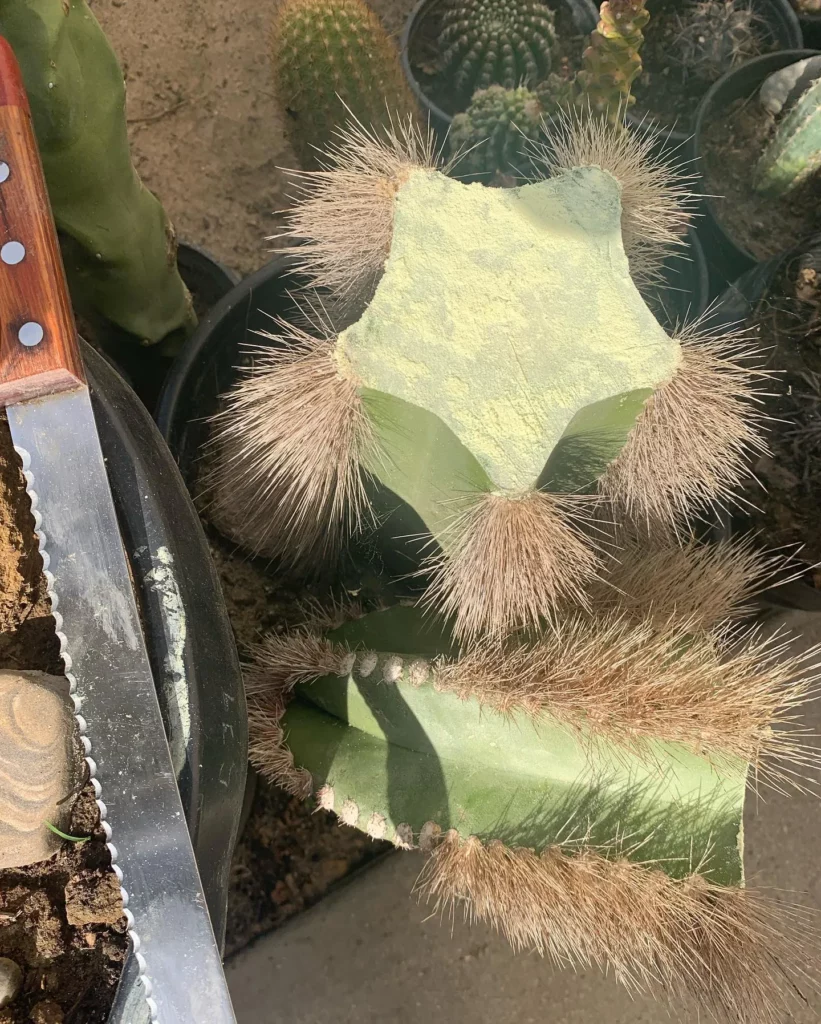
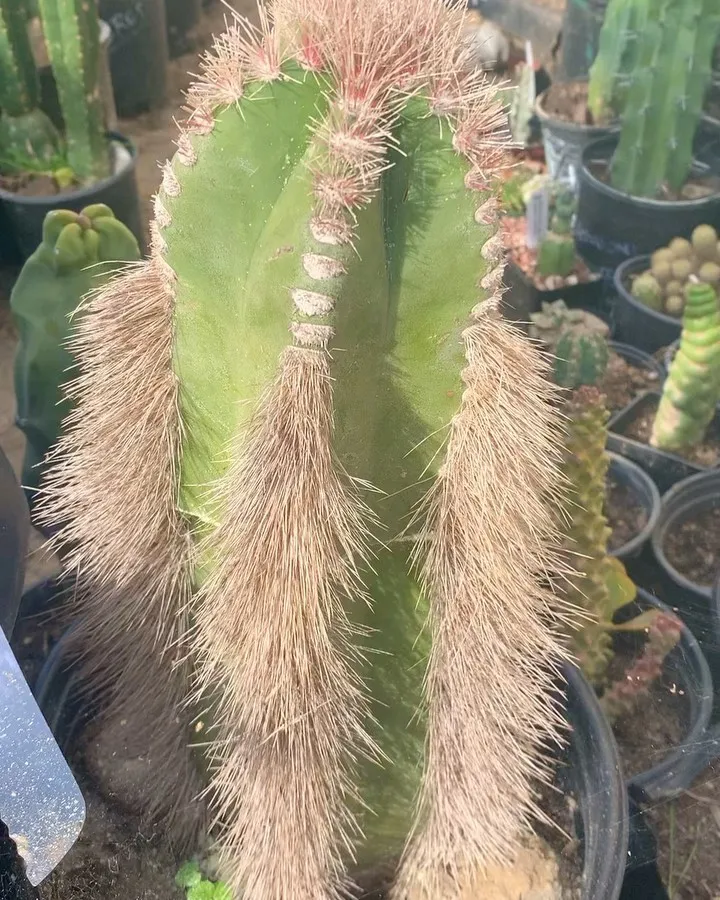
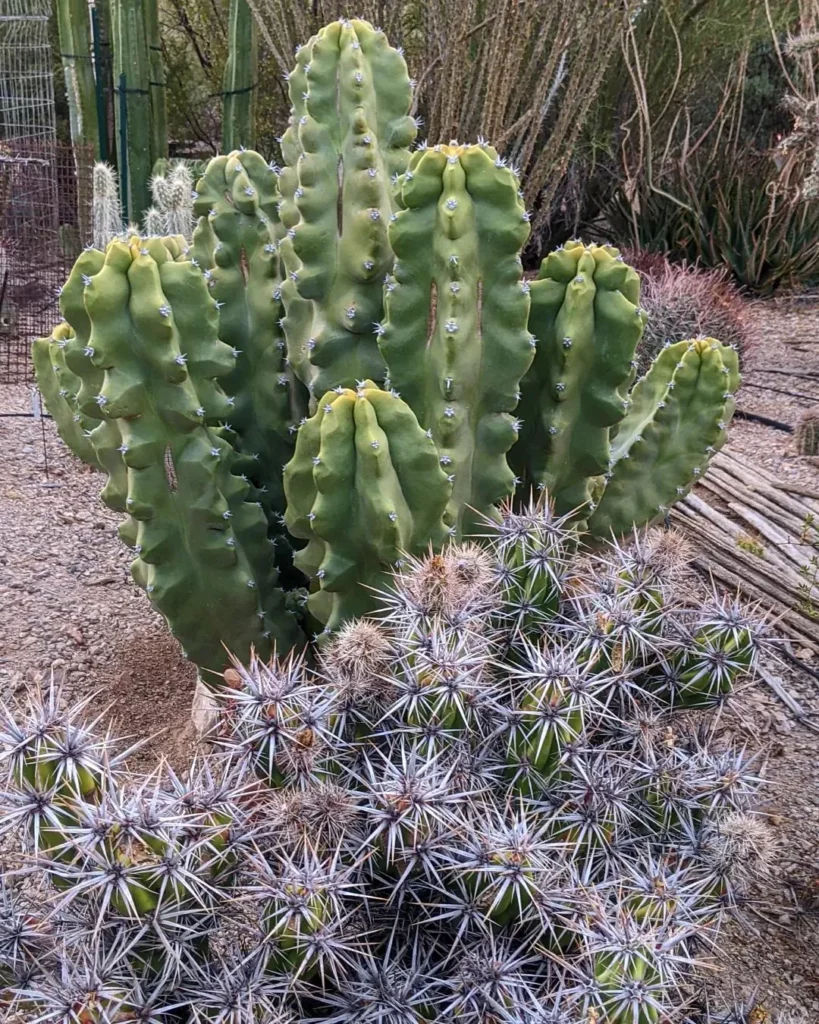
The Senita Cactus, also known as the columnar cactus, is a stunning succulent that showcases unique characteristics. With its tall and branching structure, it can reach heights of up to fifteen feet, making it a standout feature in any home or garden. The thick stems of the Senita Cactus feature five to ten ribs and are adorned with clusters of gray spines. Some plants may even have delightful hairy beards at the ends of their stems, adding a touch of whimsy to their appearance.
During the spring season, the Senita Cactus produces pale pink flowers along its upper stems, creating a beautiful spectacle. As the cactus continues to grow, it develops spineless, red, oval-shaped fruits with edible red pulp, making it not only visually appealing but also a potential source of enjoyment for those who appreciate its unique flavor.
The Senita Cactus’ remarkable appearance, with its tall stature, spiny stems, vibrant flowers, and enticing fruits, makes it an exceptional choice for both indoor and outdoor cultivation.
Light Requirements for Senita Cactus

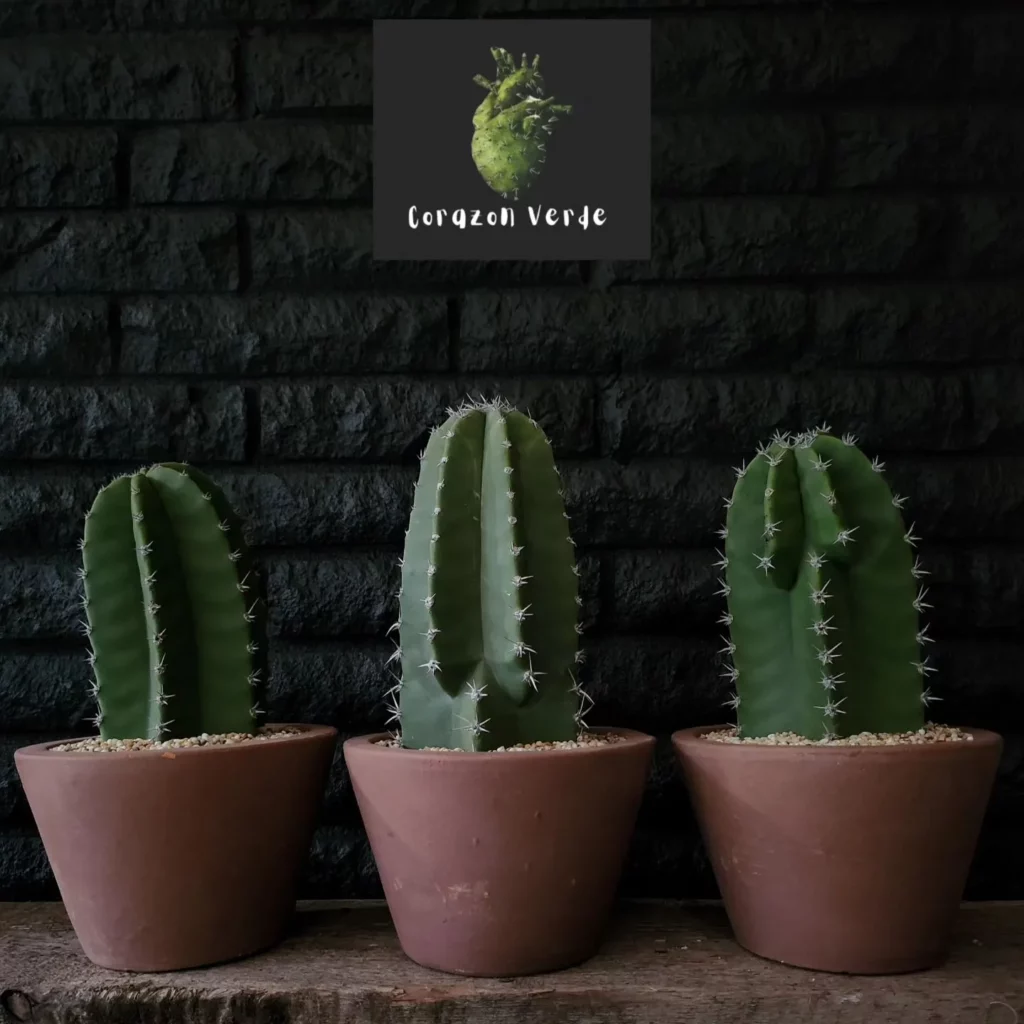

The Senita Cactus is a sun-loving plant that thrives in bright, direct sunlight. When it comes to light requirements, this unique succulent requires ample sunlight to grow and develop properly. If you’re planning to keep it indoors, make sure to place your Senita Cactus in a location with at least six to eight hours of bright, indirect sunlight each day. This will provide the plant with the necessary light energy for photosynthesis, helping it thrive.
For outdoor cultivation, choose a spot that receives maximum sunlight exposure. Avoid placing the Senita Cactus in areas with excessive shade, as this can hinder its growth. The more sunlight it receives, the better it will flourish. So, whether you keep it indoors or outdoors, providing adequate sunlight is essential for the overall health and vitality of your Senita Cactus.
Here are some key points to remember regarding the light requirements for Senita Cactus:
- Senita Cactus thrives in full sun and requires ample sunlight to grow and develop properly.
- Indoors, ensure that the plant receives at least six to eight hours of bright, indirect sunlight each day.
- If growing outdoors, choose a spot with maximum sunlight exposure and avoid areas with excessive shade.
Watering Senita Cactus
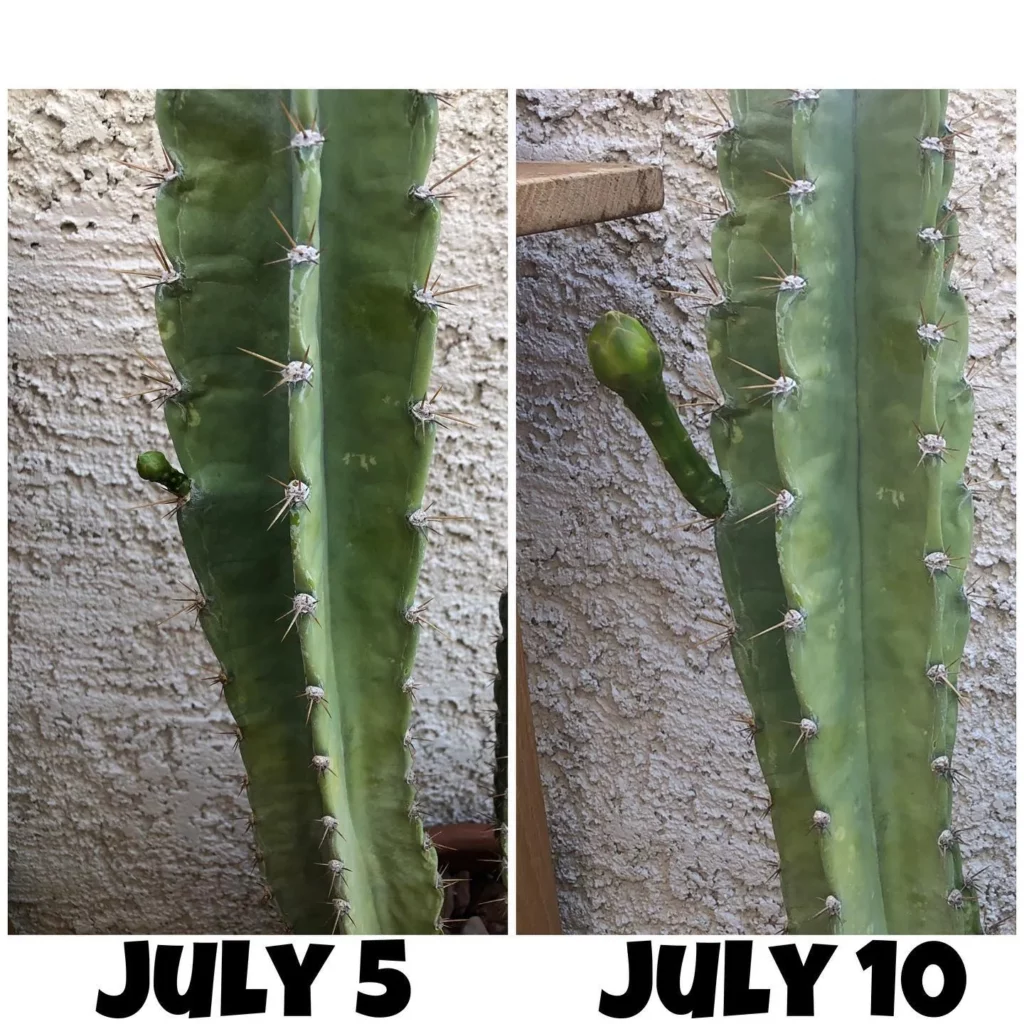
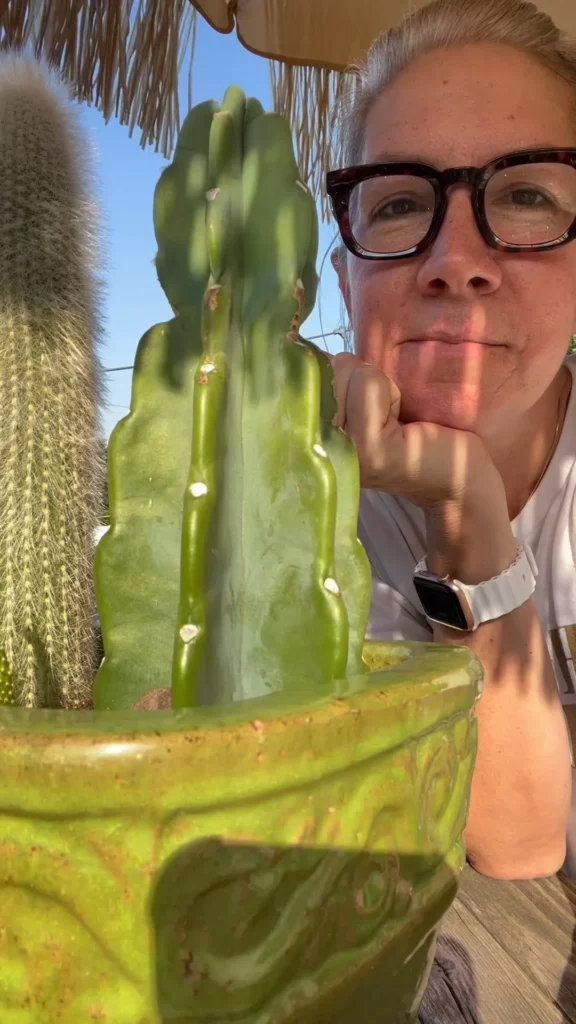
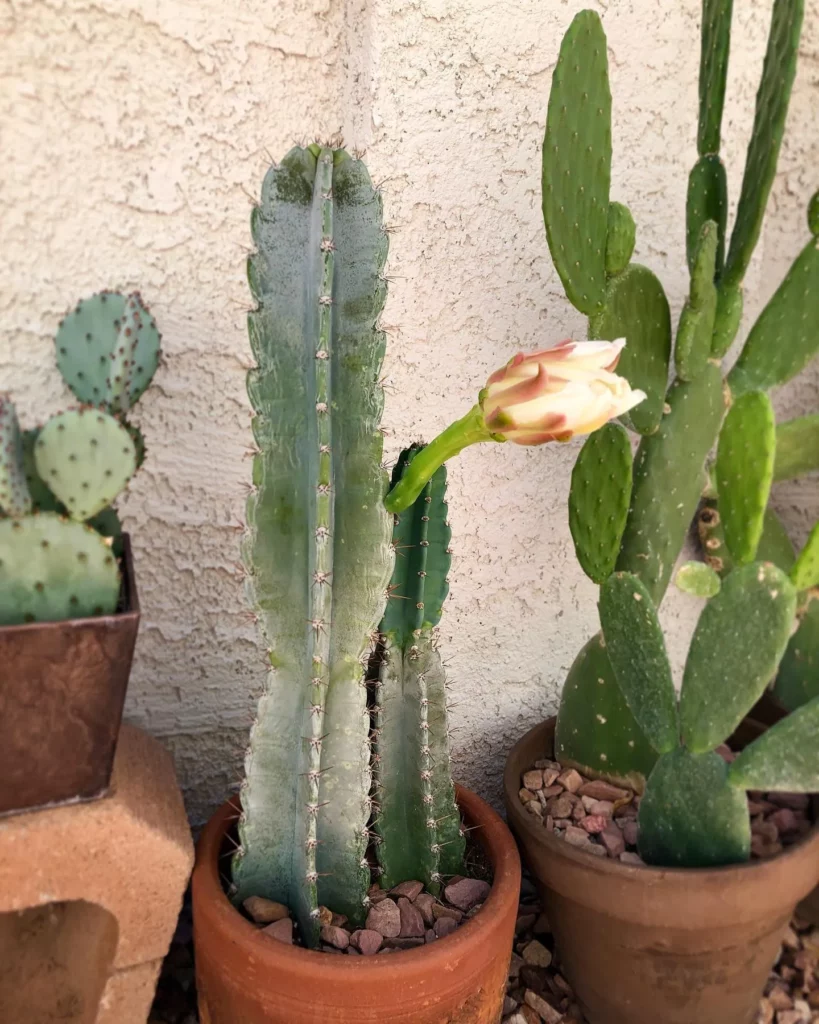
Proper watering is crucial for the health and well-being of your Senita Cactus. While this succulent is drought-tolerant, it still requires regular hydration to thrive. Here are some important tips to keep in mind when watering your Senita Cactus:
- Water thoroughly: When watering, make sure to thoroughly saturate the soil until water drains out from the bottom of the pot. This ensures that the entire root system receives moisture. Avoid shallow watering, as it can lead to weak root development.
- Allow the soil to dry out: After watering, allow the soil to dry out completely before watering again. Senita Cactus prefers well-draining soil, so overwatering can cause root rot and other issues. As a general rule, water your Senita Cactus once every two to three weeks during the active growing season, and reduce the frequency during the dormant period.
- Monitor environmental conditions: Take into account factors such as temperature, humidity, and the size of your Senita Cactus when determining the watering frequency. Plants in smaller pots may require more frequent watering, while those in larger pots may need less.
- Observe the plant’s response: Pay attention to the condition of your Senita Cactus. If the leaves start to appear wilted or shriveled, it may be a sign that the plant needs water. However, if the stems feel soft or mushy, it could indicate overwatering. Adjust your watering schedule accordingly.
Fertilizing Senita Cactus

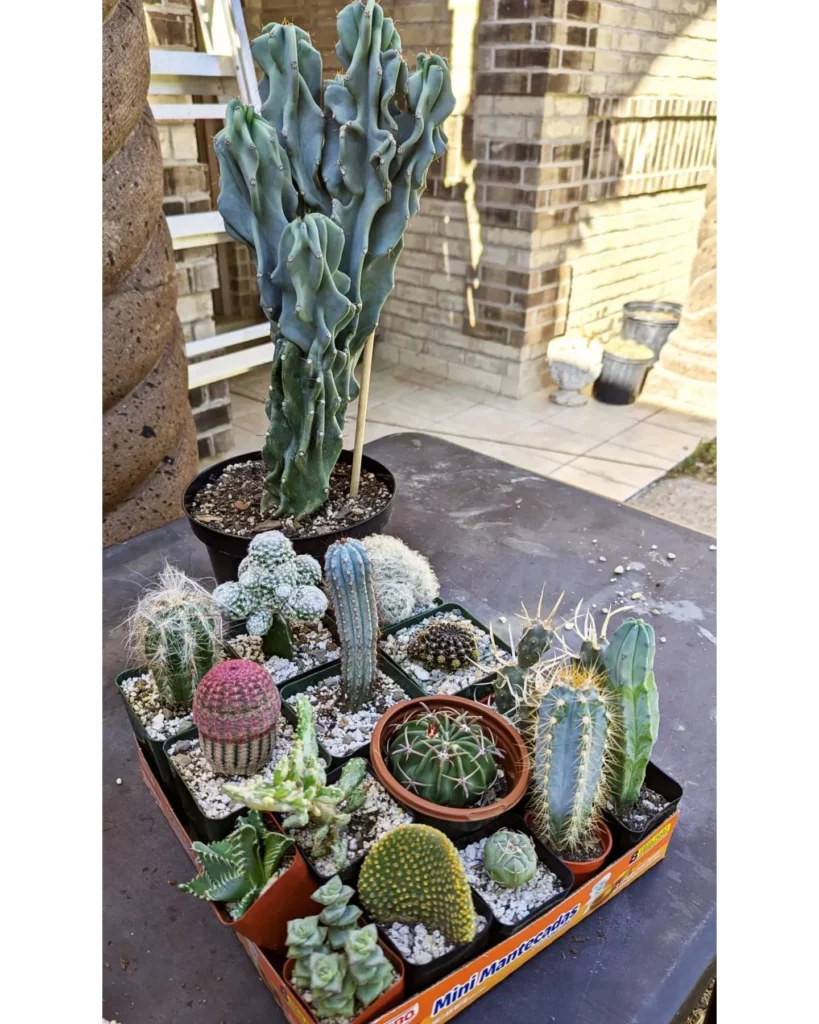
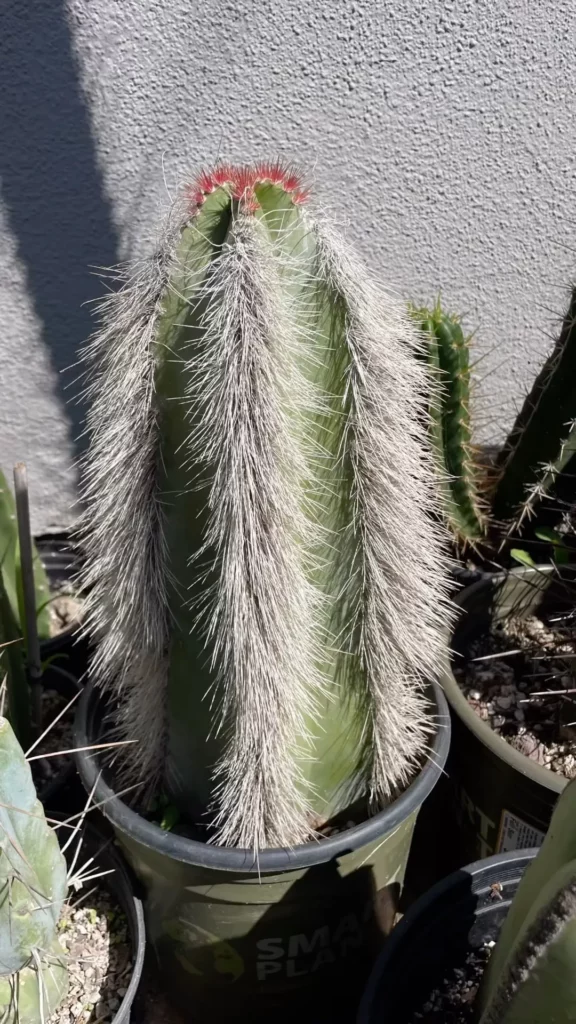
Proper fertilization is essential for the healthy growth and development of Senita Cactus. While this succulent can thrive in nutrient-poor conditions, providing a balanced fertilizer during the growing season can promote even better results.
Types of Fertilizers
- Liquid fertilizer specifically formulated for cacti and succulents is the most suitable choice for Senita Cactus.
- Look for a fertilizer with a balanced NPK ratio (nitrogen, phosphorus, and potassium) to ensure the plant receives the necessary macro and micronutrients.
Fertilizing Technique
- Water the plant thoroughly before applying fertilizer to ensure the nutrients are evenly distributed in the soil.
- Dilute the liquid fertilizer according to the instructions and apply it directly to the soil around the base of the Senita Cactus.
- Avoid applying fertilizer to the leaves or stems, as this can cause burns or damage.
- After fertilizing, make sure to water the plant lightly to help the nutrients penetrate the soil.
Senita Cactus Potting Tips: How to Pot Senita Cactus for Optimal Growth
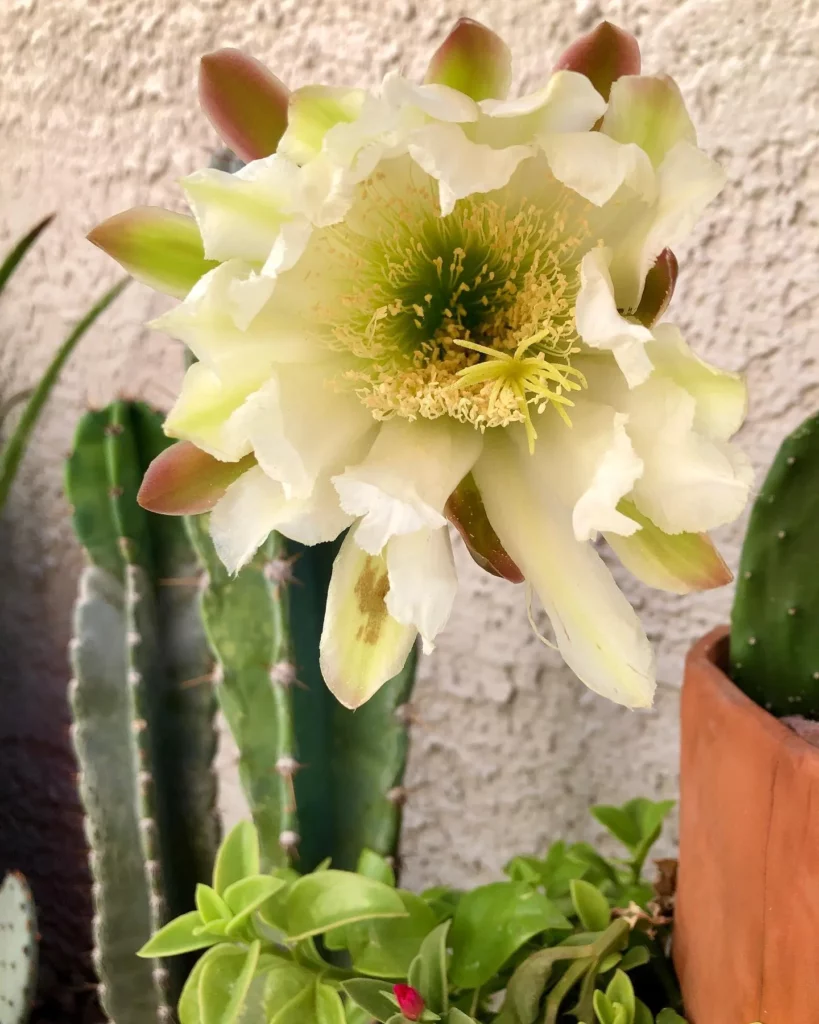
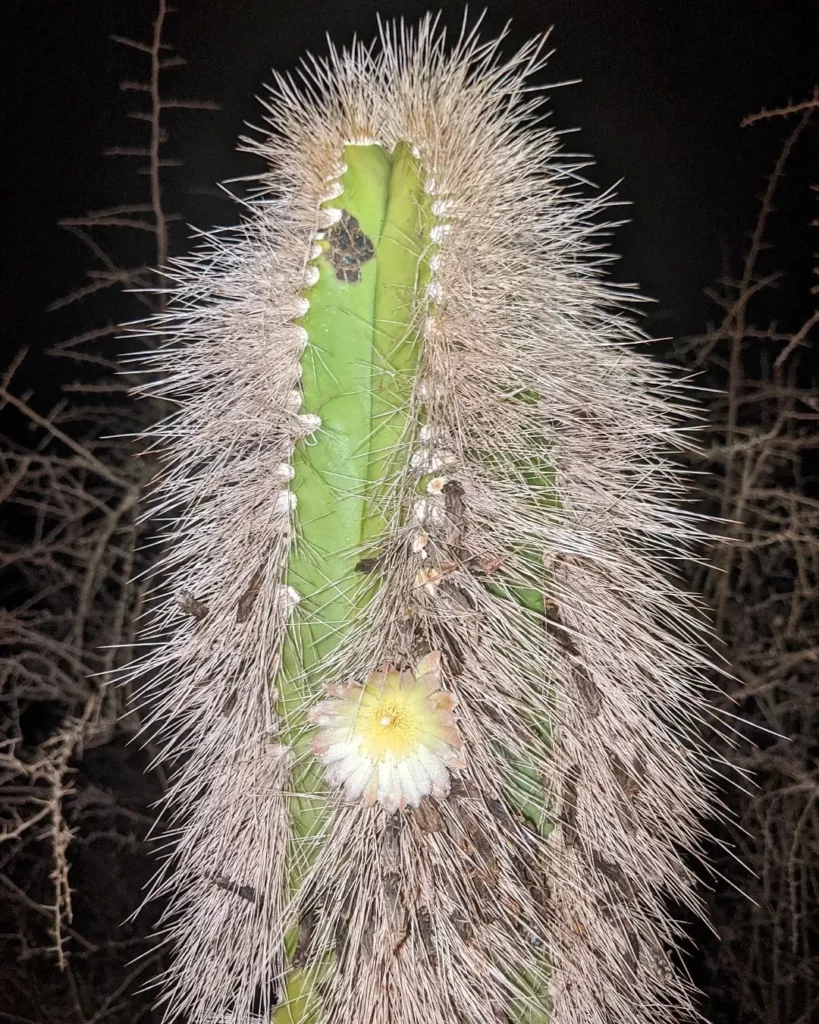
One of the key factors in ensuring the optimal growth and health of your Senita Cactus is proper potting. When it comes to potting Senita Cactus, there are a few important considerations to keep in mind to provide the ideal growing conditions for this unique succulent.
Choosing the Right Potting Mix
When potting Senita Cactus, it is crucial to select a well-draining potting mix specifically formulated for cacti and succulents. This type of mix allows excess water to flow out of the pot quickly, preventing waterlogged roots that can lead to root rot. Avoid using regular potting soil that retains moisture, as it can suffocate the roots and cause damage to your plant.
Proper Repotting Technique
Senita Cactus should be repotted every two to three years or when it outgrows its current container. When repotting, gently remove the plant from its current pot, taking care not to damage the delicate roots. Shake off any excess soil and inspect the roots for any signs of rot or disease. Place the Senita Cactus in a slightly larger container, ensuring that the pot has drainage holes. Fill in the gaps with fresh potting mix, being careful not to bury the stem too deeply.
Potting Location and Care
After potting your Senita Cactus, choose a suitable location that provides the right amount of sunlight. Senita Cactus thrives in full sun, so find a spot with maximum sunlight exposure, whether indoors or outdoors. Remember to water sparingly but adequately, allowing the soil to dry out completely between waterings. Monitor your Senita Cactus for any signs of overwatering or under watering and adjust your care routine accordingly.
Propagating Senita Cactus: Methods and Tips
If you’re looking to expand your collection of Senita Cacti or share the beauty of this unique succulent with others, propagation is the way to go. Senita Cactus can be easily propagated through stem cuttings and leaf cuttings, allowing you to create new plants and watch them grow. In this section, I will guide you through the process of propagating Senita Cactus, providing step-by-step instructions and helpful tips.
Stem Cuttings
- Select a healthy stem: Choose a mature stem from your Senita Cactus that is free from any signs of disease or damage. Using a sterilized cutting tool, carefully remove a section of the stem that is at least a few inches long.
- Allow the cutting to dry: After cutting, allow the end of the stem to dry and form a callus. This usually takes a few days and helps prevent rotting when the cutting is planted.
- Plant the cutting: Fill a small pot with well-draining potting mix and make a hole in the center. Insert the dried end of the stem cutting into the hole, ensuring that it is upright. Gently press the soil around the cutting to secure it in place.
- Care for the cutting: Place the pot in a warm and bright location, but avoid direct sunlight. Water sparingly, keeping the soil slightly moist but not overly wet. Within a few weeks to a few months, new roots should start to develop, indicating successful propagation.
Leaf Cuttings
- Select a healthy leaf: Choose a mature leaf from your Senita Cactus that is fully grown and free from any damage. Gently twist or cut the leaf off the stem, ensuring that you retain the entire leaf, including the base.
- Allow the leaf to dry: After removing the leaf, place it in a well-ventilated area and allow it to dry for a few days until a callus forms at the cut end. This callus helps protect the leaf during planting.
- Plant the leaf cutting: Fill a small pot with well-draining potting mix and make a hole in the center. Insert the calloused end of the leaf cutting into the hole, making sure it is upright. Be careful not to bury the leaf too deeply.
- Care for the cutting: Place the pot in a bright location with indirect sunlight. Mist the leaf cutting lightly with water once or twice a week to keep it hydrated. After a few weeks to a few months, new roots should begin to grow, indicating successful propagation.
Growth and Development of Senita Cactus
The Senita Cactus is a slow-growing plant, taking several years to reach its full height and develop its distinctive characteristics. During the early stages of development, it may seem like the growth rate is minimal, but with patience and proper care, the Senita Cactus can eventually reach up to fifteen feet in height and form thickets.
To ensure healthy growth, it’s essential to provide regular watering, adequate sunlight, and proper fertilization. The Senita Cactus thrives in full sun, so placing it in a location with direct sunlight is ideal. Indoors, ensure it receives at least six to eight hours of bright, indirect sunlight each day. Outdoors, choose a spot with maximum sunlight exposure.
When it comes to watering, be mindful of striking a balance. While the Senita Cactus is drought-resistant, it still requires regular and adequate water. Thoroughly saturate the soil during watering and allow it to dry out completely between waterings to prevent root rot. Generally, watering once every two to three weeks during the growing season is sufficient.
Promoting Healthy Growth:
- Provide regular watering and ensure the soil dries out completely between waterings.
- Place the Senita Cactus in a location with direct sunlight for at least six to eight hours a day.
- Choose a well-draining potting mix specifically formulated for cacti and succulents when repotting.
- Apply a balanced fertilizer sparingly once every two to four weeks during the growing season.
- Keep an eye out for common pests like mealybugs, scale insects, and spider mites, and take appropriate measures to control them.
Pests and Diseases Affecting Senita Cactus
Sena Cactus, like any other plant, can be affected by pests and diseases. While it is generally resilient, it is important to be aware of the common issues that can arise. Here are some of the pests and diseases that can affect Senita Cactus:
Pests:
- Mealybugs: These small, white, cotton-like insects can infest the Senita Cactus, causing damage to the plant. Regularly inspect your cactus for signs of mealybugs and take appropriate action to control their population.
- Scale insects: These tiny, immobile pests can attach themselves to the stems and leaves of the Senita Cactus, sucking out its juices. If left unchecked, scale insects can weaken the plant and stunt its growth.
- Spider mites: These minuscule pests can be difficult to spot but can cause significant damage to the Senita Cactus. They feed on the plant’s sap, leaving behind yellowed or discolored leaves.
Diseases:
- Root rot: Overwatering or poorly draining soil can lead to root rot in Senita Cactus. This fungal disease can cause the roots to decay and potentially kill the plant. To prevent root rot, ensure proper watering practices and use well-draining soil.
- Nutrient deficiencies: Senita Cactus can develop yellow or discolored leaves as a result of nutrient deficiencies. It is important to monitor the plant’s health and address any deficiencies promptly through appropriate fertilization.
Conclusion
First and foremost, provide ample sunlight to your Senita Cactus, whether it’s indoors or outdoors. This plant thrives in full sun, so make sure it gets at least six to eight hours of bright, indirect sunlight each day.
When it comes to watering, remember to strike a balance. Thoroughly saturate the soil and allow it to dry out completely between waterings. Overwatering can lead to root rot, so be mindful of its water needs.
In terms of fertilizing, Senita Cactus has relatively low requirements. Use a diluted liquid fertilizer specifically formulated for cacti and succulents, applying it sparingly once every two to four weeks during the growing season.
For potting, choose a well-draining potting mix and make sure the pot has drainage holes. Repot every two to three years or when the plant outgrows its current container, being careful not to bury the stem too deeply.
If you want to propagate your Senita Cactus, it’s easily done through stem cuttings or leaf cuttings. Just follow the steps outlined in the propagation section.
Lastly, keep an eye out for common pests and diseases that can affect your Senita Cactus. Manage any infestations promptly and avoid root rot by ensuring proper watering and soil drainage.
FAQ
How tall can a Senita Cactus grow?
Senita Cactus can reach up to fifteen feet in height.
What does the Senita Cactus look like?
Senita Cactus has tall, branching stems with five to ten ribs, gray spines, and clusters of pale pink flowers in spring.
How much sunlight does a Senita Cactus need?
Senita Cactus thrives in full sun and requires at least six to eight hours of bright, indirect sunlight each day.
How often should I water my Senita Cactus?
Water your Senita Cactus every two to three weeks, ensuring you thoroughly saturate the soil and allow it to dry out completely between waterings.
What kind of fertilizer should I use for my Senita Cactus?
Use a diluted liquid fertilizer specifically formulated for cacti and succulents, applying it sparingly once every two to four weeks during the growing season.
How do I pot my Senita Cactus?
Use a well-draining potting mix formulated for cacti and succulents, ensuring the pot has drainage holes. Repot every two to three years or when the plant outgrows its container.
How do I propagate my Senita Cactus?
Senita Cactus can be propagated through stem cuttings or leaf cuttings. Allow the cut ends to dry and callus before planting them in well-draining potting mix.
How long does it take for a Senita Cactus to grow?
Senita Cactus is a slow-growing plant, and it can take several years to reach its full height and develop its distinctive characteristics.
What are the common pests and diseases that affect Senita Cactus?
Senita Cactus can be affected by mealybugs, scale insects, spider mites, and root rot if overwatered or exposed to poorly draining soil.
How do I take care of my Senita Cactus?
Provide ample sunlight, water sparingly but adequately, use a balanced fertilizer, pot in well-draining soil, propagate when needed, and watch out for pests and diseases.

